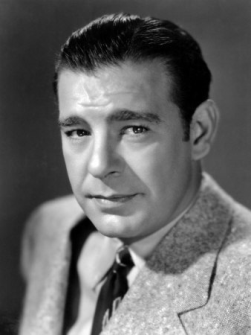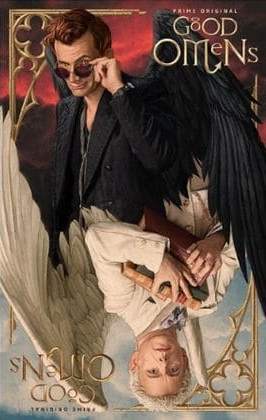Professor Charles Xavier (James McAvoy) sends his X-Men—Mystique (Jennifer Lawrence), Beast (Nicholas Hoult), Jean Grey (Sophie Turner), Cyclops (Tye Sheridan), Storm (Alexandra Shipp), Quicksilver (Evan Peters), and Nightcrawler (Kodi Smit-McPhee)—on a dangerous mission into space for…reasons…in an airplane that definitely can’t go into space, but does anyway. There, a lot of CGI happens, and afterward, Jean acts like she’d like to have some fun, which makes Cyclops suspicious because… just because. It seems she has absorbed the ultimate power in the universe, or something like that—it isn’t really explained—and that makes her libel to blow up people. After the X-Men get in a fight with her for…reasons…she goes off to see Magneto (Michael Fassbender) for…reasons. Then an alien (Jessica Chastain) comes to chat with Jean because…sure, why not? And then there’s more CGI. So… Yeah, that’s about it.
I expected Dark Phoenix to be bad. The Dark Phoenix storyline from the comics is very long, very convoluted, occasionally goofy, and only works because you have years of Jean being a dull prude, so her breaking free and going wild was an event. Of course they can’t do that with a movie, so they were going to have to chop it to something very simple. They did that before with X-Men: The Last Stand, and it didn’t work out well, and I had no reason to think it would this time. They’d already introduced the phoenix force in a previous movie in a way that suggested they were going to repeat past mistakes, but then I’d heard they were going to just drop that continuity and start over (which they did), and that seemed worse.
The last few X-Men films had put the series on a wrong track, and then Dark Phoenix had substantial production problems before they panicked about similarities with Captain Marvel and reshot the last act. Nothing says quality like ditching the entire direction of your film and replacing it with whatever random thing you could think of in the middle of the night. I saw Sophie Turner hit the talk show circuit only to have the film pulled from the release schedule a few days later. Clearly Fox had no confidence in the picture, nor did its new owner, Disney. I also knew that Jennifer Lawrence, now being a big star, no longer had interest in the project, nor sitting in a makeup chair—the result being the worst makeup in X-Men franchise history, looking like something from a lower budget 1950s film, and Mystique being written out of the story early simply so that Lawrence only had to be on set a few days. I’d also heard that they rewrote the nature of the villain while shooting (and reshooting).
So yeah, I expected it to be bad.
But it wasn’t what I expected. I expect huge, ridiculous moments. I expected something silly. I expected the likes of X-Men Origins: Wolverine or The Last Stand. No, what I got was emptiness. It isn’t bad in the way something is when people make stupid decisions or freak out when their plans fall through. It’s just tired. It’s as if everyone trudged to work each day, moaning softly and longing for bed. It’s as if the writers could barely lift a pencil. It’s like director Simon Kinberg was slumped forward in his chair, whispering “cut” before falling to the floor. Sophie Turner was there, at least it body, no doubt carried by slaves of the pit from set to set, and then left, uncertain of where she was, or even if she was. James McAvoy and Nicholas Hoult seem too exhausted to say their lines, or look up. Maybe they were dreaming of a needle and the cold oblivion it brings. I can only assume that Michael Fassbender paused in his daily planned suicides to creep from his trailer to the set, yet, being Michael Fassbender, he’s still pretty good (that’s the only time “good” will be used in reference to this film). I’m not sure Jennifer Lawrence did show up. It seems clear that editing was done, with hundred year old equipment located in limbo, by insomniacs whose eyes no longer focus as they hold heavy rusted blades above the slowly moving film stock that never stops for all of eternity.
Maybe Dark Phoenix wasn’t made by a human-run film company at all. It sits in the shadows between life and death and the wind never blows, where there is no joy, no energy, and no care.
I’m not saying that Dark Phoenix is depressing, or at least much more than other X-Men films. “Depressing” is an attribute, and it has no attributes. There needs to be life for depression. Dark Phoenix doesn’t live. It exists, though I suspect most of those involved don’t care, or perhaps aren’t even aware. It’s not that they wish it didn’t exist—that would suggest some level of engagement. They don’t dislike Dark Phoneix, nor hate it, any more than I do. There is power in hatred, and there’s no power here. There is nothing here. Dark Phoenix is the void outside the realm of cinema.
My 1 star rating says to skip it, but that’s too strong a statement. You should skip bad films. You should see good films. This is neither. See it, or don’t see, but don’t try to do either of those things. No one involved tried to do anything. Why should you?


 Unusual both on and off screen, Elsa Lanchester was a skilled and artistic actress, and Hollywood never figured out what to do with her. She could have made a great leading lady, with her unconventional beauty and dancer’s body, but was only given leading parts twice (both mentioned below). Most often she was relegated to support status, often in quite small parts as maids and housekeepers, where her quirkiness was an asset. But this suited her as she was more interested in live performances, particularly of the music hall variety.
Unusual both on and off screen, Elsa Lanchester was a skilled and artistic actress, and Hollywood never figured out what to do with her. She could have made a great leading lady, with her unconventional beauty and dancer’s body, but was only given leading parts twice (both mentioned below). Most often she was relegated to support status, often in quite small parts as maids and housekeepers, where her quirkiness was an asset. But this suited her as she was more interested in live performances, particularly of the music hall variety.










 The third of the Big Three icons of classic horror (
The third of the Big Three icons of classic horror (




 I enjoyed the Neil-Gaiman-Terry-Pratchett-based mini-series Good Omens well enough, but I was filled the entire time with the feeling that it should be more. Crowley, the not-so-evil demon is delightful, and David Tennant’s performance even more so. The interaction between Cowley and the angel Aziraphale (Michael Sheen) is a good time, though it’s mainly Cowley, and those two are the heart of the series.
I enjoyed the Neil-Gaiman-Terry-Pratchett-based mini-series Good Omens well enough, but I was filled the entire time with the feeling that it should be more. Crowley, the not-so-evil demon is delightful, and David Tennant’s performance even more so. The interaction between Cowley and the angel Aziraphale (Michael Sheen) is a good time, though it’s mainly Cowley, and those two are the heart of the series.